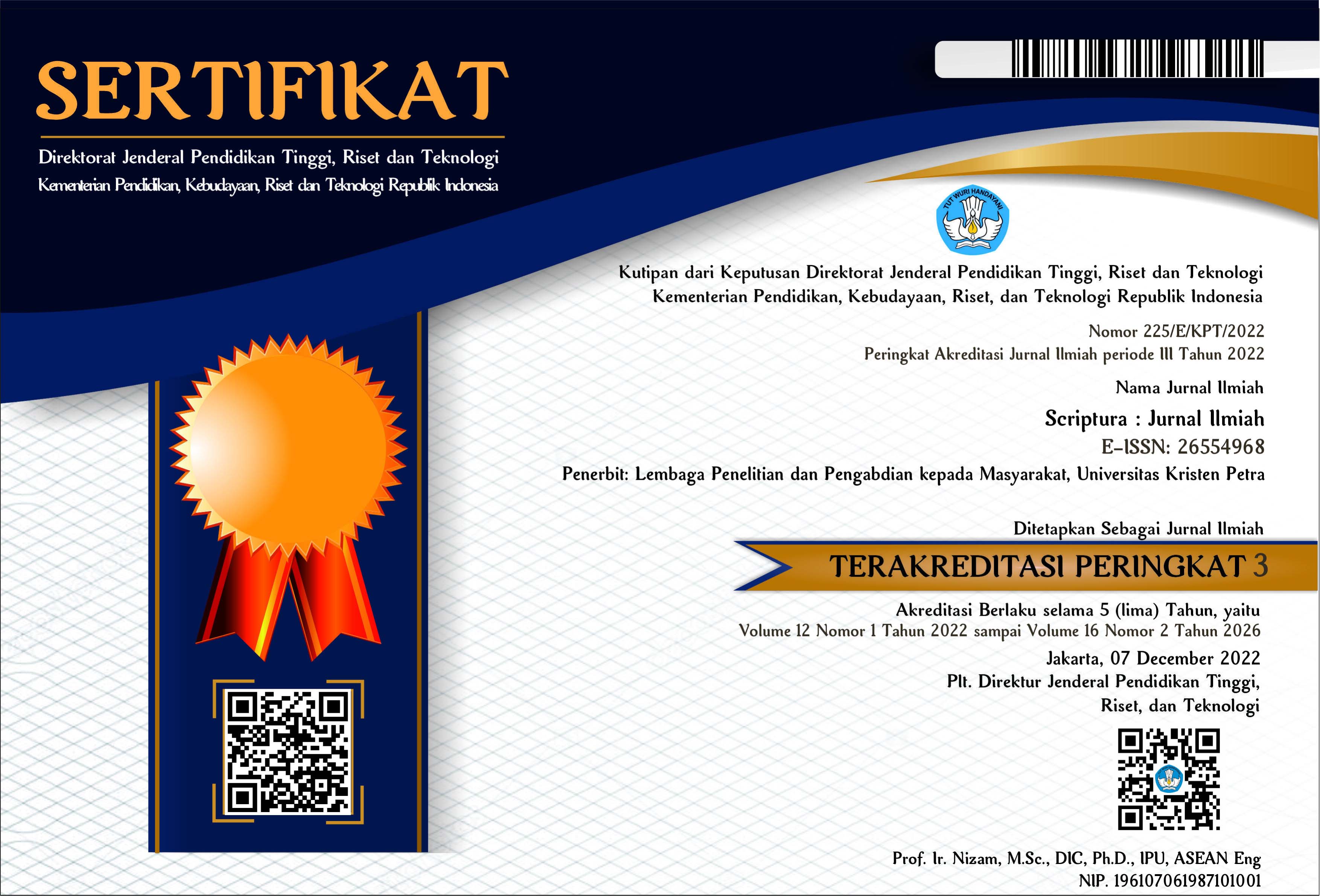DIFUSI INOVASI DALAM PROGRAM PEMBELAJARAN JARAK JAUH DI YAYASAN TRAMPIL INDONESIA
 :
:
https://doi.org/10.9744/scriptura.5.2.71-78
Keywords:
Diffusion of innovations, information and communication technology, long distance learningAbstract
This research aimed to describe the difussion of innovations conducted by TRAMPIL Indonesia Foundation in their “Learn and Teach” Program. The program was held to facilitate primary and early childhood education teachers in various places in Indonesia who have difficulty accessing higher education.This program used a combination method in the form of face to face meeting, web conferencing, and learning management system in order to maximize learning outcomes, even though the participants of the program were at remote locations and had different cultural backgrounds. This research was a descriptive qualitative research, using observation and interview as the method of collecting data. The diffusion of innovations here was seen from the innovation of using information and communication technology for long distance learning, the communication channel through interpersonal and group communication, the time of difusion as long as three years, an the penetration through social system such as school and religion institusi. The superiority of this diffusion of innovations was its success for the penetration of new technologies in the underdeveloped regions. The technology brought by TRAMPIL was a cutting-edge technology and even had not been widely used in urban areas. But with a good approach via proper communication channel and social system, this innovation could be received in a relatively short time.References
Anderson, T. (2008). The Theory and Practice of Online Learning. Edmonton: AU Press.
Andriono, T. (2015, Juni 3). Sejarah Yayasan TRAMPIL Indonesia. (M. Teguh, Interviewer)
Daymon, C., & Holloway, I. (2002). Metode-Metode Riset Kualitatif dalam Public Relations dan Marketing Communications. Yogyakarta: Pener-bit Bentang.
Hartono. (2007). Geografi: Jelajah Bumi dan Alam Semesta. Bandung: Citra Praya.
Horton, W. (2011). E-Learning by Design (Second Edition). San Fransisco: Pfeiffer.
Hulsmann, M., & Pfeffermann, N. (2011). Strategies and Communications for Innovations. London: Springer Heidelberg Dordrecht.
Morone, P., & Taylor, R. (2010). Knowledge Diffusion and Innovation, Modelling Complex Entre-preneurial Behaviours. Cheltenham: Edwar Elgar Publishing Limited.
Paonganan, Y., Zulkipli, R., & Agustina, K. (2012). 9 Perspektif Menuju Masa Depan Maritim Indo-nesia. Jakarta: Yayasan Institut Maritim Indo-nesia.
Pawito. (2007). Penelitian Komunikasi Kualitatif. Yogyakarta: LKiS Yogyakarta.
Raco, J. (2010). Metode Penelitian Kualitatif Jenis, Karakteristik dan Keunggulannya. Jakarta: PT Gramedia Widiasarana Indonesia.
Rogers, E. M. (2003). Diffusion of Innovations. New York: The Free Press.
Rosenberg, M. J. (2001). E-Learning Strategies for Delivering Knowledge in The Digital Age. New York: The McGraw-Hill Companies, Inc.
Sumardi, I. S. (2005). Melawan Stigma Melalui Pen-didikan Alternatif. Jakarta: Grasindo.
Downloads
Published
How to Cite
Issue
Section
License
Authors who publish in the SCRIPTURA Jurnal Ilmiah agree to the following terms:
Authors retain unrestricted copyright and full publishing rights. The authors grant the Publisher the right of first publication, with the work simultaneously licensed under the terms and conditions of the Creative Commons Attribution License (CC BY) that allows for unlimited use, distribution, and content reproduction on all media as long as the original author and source are properly acknowledged and cited.

















